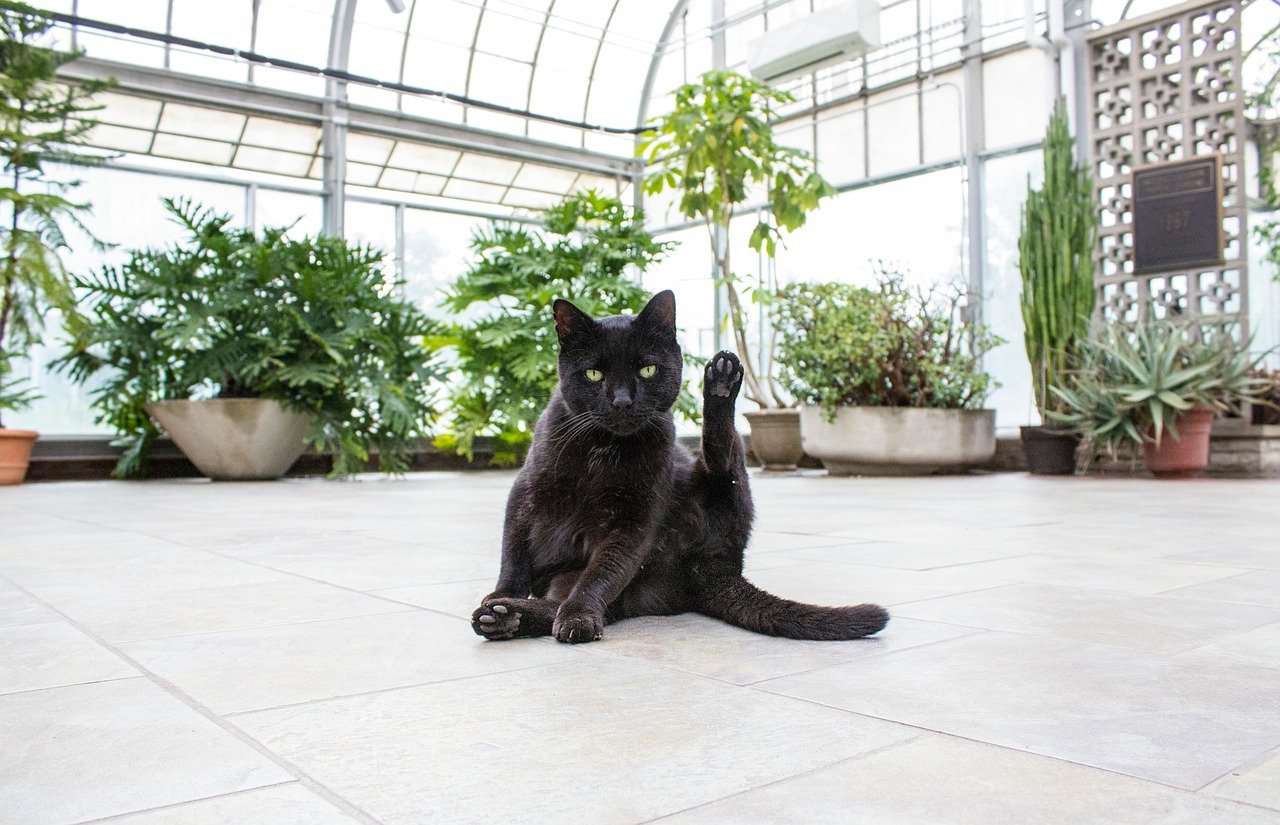Crops are a preferred method to beautify your own home and break up the concrete jungle with somewhat little bit of pure allure. Nevertheless, many common houseplants are poisonous for our pets, and ingestion may be lethal. The time period “umbrella plant” can check with many various plant species, most poisonous for cats.
Right here’s what it’s good to find out about umbrella plant toxicity in cats!
Umbrella Plant Toxicity: Are They Poisonous to Cats?
In response to the ASPCA’s non-exhaustive checklist of poisonous and non-toxic vegetation, the umbrella plant, Eriogonum umbellatum, is non-toxic for cats, canine, and horses. Nevertheless, even when the plant shouldn’t be naturally poisonous cats should expertise gastrointestinal misery.
Cats are what we check with as “obligate carnivores” within the science world. Meaning they’re biologically predestined to devour a eating regimen primarily made up of animal proteins. Within the wild, a least 70% of a cat’s eating regimen contains animal proteins.
Their intestine microbiomes are totally different from these of herbivorous and omnivorous animals. The caecum—the a part of the digestive tract that homes the micro organism used for breaking down plant materials in herbivorous and omnivorous animals—is smaller and lacks the digestive enzymes and micro organism used to digest plant materials.
Thus, when a cat consumes plant materials—even when the plant shouldn’t be inherently dangerous—they might nonetheless expertise some gastrointestinal misery resulting from anatomy.

What About Different “Umbrella” Crops? Are They Secure for Cats Too?
Sadly, the Eriogonum umbellatum is the one plant often known as an “umbrella plant” secure for cats. We’ve compiled a listing of the opposite vegetation which will generally be colloquially known as an “umbrella plant” and the signs of toxicity that you simply would possibly see in cats who’ve consumed a part of the plant.
Umbrella Tree
First off, let’s have a look at the Brassaia actinophylla or the umbrella tree. This plant has many names, together with the Australian ivy palm, octopus tree, starleaf, and schefflera. This plant is poisonous to cats, canine, and horses because it incorporates terpenoids, saponins, and insoluble oxalates.
Nevertheless, whereas the umbrella tree is listed as poisonous, the commonest uncomfortable side effects of consumption are mouth ache, delicate vomiting, and diarrhea. Delicate toxicity shouldn’t be identified to trigger extreme or long-lasting issues.
Texas Umbrella Tree
Whereas the names sound comparable, there’s a distinction between the umbrella tree and the Texas umbrella tree. The Texas umbrella tree, Melia azedarach, goes by many names, together with the China ball tree, Chinaberry tree, paradise tree, Persian lilac, white cedar, Japanese bead tree, bead tree, and the Satisfaction-of-India. Nonetheless, the Texas umbrella tree is taken into account poisonous for cats, canine, and horses when consumed.
The Texas umbrella tree incorporates tetranortriterpenes often known as meliatoxins. When consumed by a cat, house owners can count on their cat to expertise diarrhea, vomiting, hypersalivation, despair, weak spot, and seizures. In extreme instances of toxicity, dying and critical issues can happen.
The berries have the very best focus of poisons, however all components of the Texas umbrella tree are thought of poisonous for cats, together with the bark. Contact your veterinarian instantly in case your cat has consumed a part of your Texas umbrella tree, as this plant is extremely toxic for cats.
Umbrella Leaf
Just like the Texas umbrella tree, the umbrella leaf plant—or Podophyllum peltatum—is poisonous to cats, canine, and horses. The plant incorporates podophyllin that’s poisonous when consumed by animals, and issues may be extreme, albeit hardly ever.
Animals that devour components of the umbrella leaf plant will expertise vomiting, diarrhea, lethargy, panting, and, in uncommon instances, coma. Pores and skin contact with the plant could cause redness and pores and skin ulcers. Essentially the most extreme poisonings are from the unripe fruit and inexperienced leaves. The toxicity lessens because the fruit ripens.

Closing Ideas
Sadly, most of the vegetation we’re accustomed to adorning our houses are harmful for our pets. The easiest way to maintain your cat safe from any toxic plants is to not welcome the vegetation into your own home within the first place. Whereas the vegetation is perhaps stunning, they’re not price by chance harming your pets.
Contact your veterinarian instantly for those who suspect that your cat could have ingested one thing poisonous. Your veterinarian has entry to poisoning data and may make a greater determination on whether or not your cat must be introduced into the workplace for remark.
Featured Picture Credit score: Burning_Bright, Shutterstock
